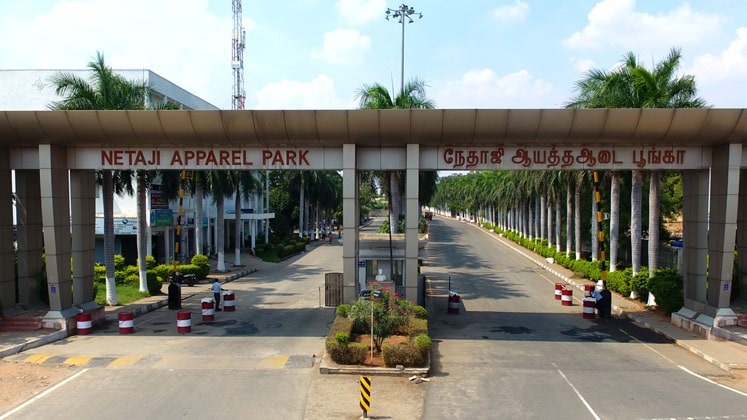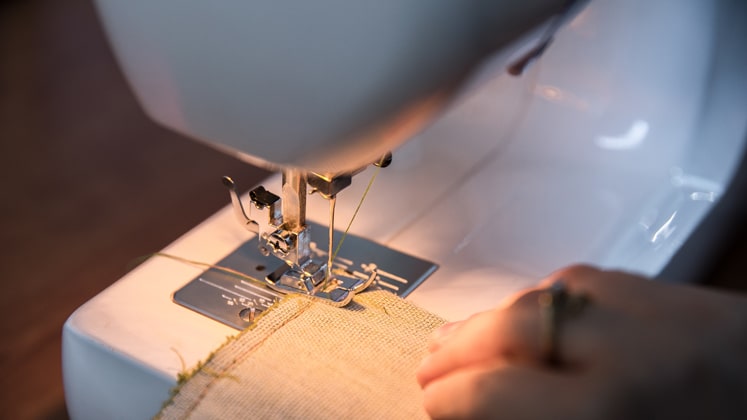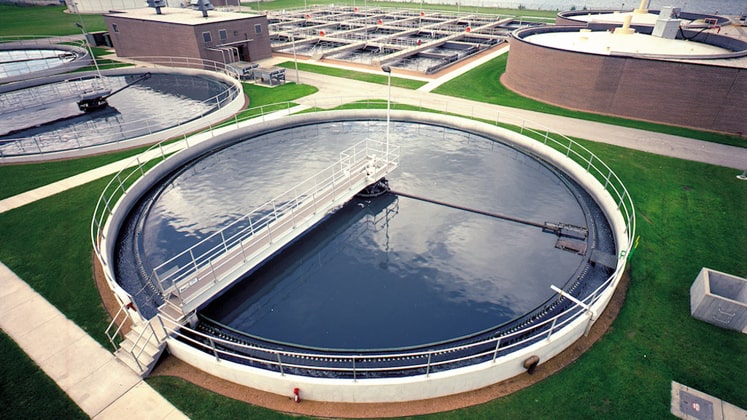Green manufacturing, a growing concept, is the need of the hour as it is among the major base areas for being sustainable and towards the journey of becoming carbon-neutral. As per Goodwin University, US, green manufacturing is the renewal of production processes and the establishment of environmental-friendly operations within the manufacturing field. Essentially, it is the ‘greening’ of manufacturing, in which workers use fewer natural resources, reduce pollution and waste, recycle and reuse materials and moderate emissions in their processes.
Indian apparel manufacturing industry is following nearly all the aspects of green manufacturing including energy efficiency, waste reduction, closed-loop supply chain, green factories and green funding. And it includes a variety of small but significant steps like LED lights to initiatives like ZLD which take up huge investment. To reduce water, chemical and energy consumption, investment in state-of-the-art technology and processing and printing machines to minimise the use of energy and chemicals is also the priority for many.
| India’s overall green financing requirement is estimated to be at least 2.5 percent of gross domestic product (GDP) annually till 2030. |
To support green initiatives and motivate the industry to invest in the same, public and private investors are taking a keen interest to fund sustainable practices taken up by the fashion industry. Various Indian banks also provide a variety of options to fund the companies for green initiatives. There are different types of subsidies on green initiatives such as CETP, solar plants and ZLD.

Building energy-efficient factories
Among the eco-friendly manufacturing practices, energy efficiency is the priority for the Indian textile and apparel industry as it not only has direct relation with environmental-friendly operations but also improves the bottom line.
Solar and wind energy, the use of LED lights, ensuring maximum use of sunlight, using servo motors in stitching machines, use of PNG for boilers are some of the major tools adopted by garment manufacturing units. Hundreds’ of factories’ shopfloors are full of fresh air and ensure cross ventilation as they are quite open from one side and there are large windows on the other side, with several high-volume, low-speed fans also installed on the shopfloor.
From small and medium-levels to big giants, there are thousands of factories using some amount of solar light as they have rooftop installation. As a collective effort, 3.4 MW solar power project is installed under Group Captive model inside the Netaji Apparel Park, Tirupur.It not only becomes instrumental for cost saving, but also ensures an uninterrupted power supply. This park has around 50 factories of leading apparel exporters.
Also Read: Textile and apparel industry’s deep route in sustainability flourishing constantly

Various states have thrust on solar energy like Haryana which has made it mandatory to have a solar project if the new building is built on a plot size of 500 square yards and above. Maharashtra’s new textile policy includes the cost of setting up the solar power plant up to a maximum limit of 4 MW in fixed capital investment.
SCM Energy Division (SCM Garments-The Chennai Silks) is a pioneering example when it comes to harnessing green power through windmills. This vertically integrated group has ZLD and follows most of the other processes of green manufacturing.
Fashion Craft Ltd. – Bengaluru-based manufacturing unit of Aditya Birla Fashion and Retail Ltd. (ABFRL) –uses a novel waste management strategy that promotes sustainable resource management and waste reduction practices. It has implemented a variety of sustainability measures including the Reduce-Reuse-Recycle approach; diversion of waste from landfills; sustainable packaging and processes such as in-house composting, zero-waste purchasing and hazardous waste prevention.
Matrix Clothing, Gurugram, one of the leading apparel exporters of India, is able to manage around 65 per cent of its electricity needs for its sources like solar and windmill. From time to time, various apparel manufacturers do get awards also for their energy-saving efforts.
Even micro and small units which anyhow couldn’t adopt such practices, have a specific operator or person in the factory who is assigned with the task of assessing that energy is not being wasted at all, be it in the form of small checks such as switching off the fan during lunch etc.
| Indian apparel industry has limited examples when it comes to generating green funding as in 2021, The Good Fashion Fund, the Fashion for Good initiated fund to drive sustainable manufacturing practices and signed their first deal with Indian apparel manufacturer Pratibha Syntex. The deal was for a long-term loan amounting to US $ 4.5 million to support the apparel manufacturing company’s planned capital expenditures for the replacement of machinery and expansion of sustainable equipment in spinning, processing and garment divisions. |
Apart from all the above-mentioned steps, there are a few more examples like some of the companies are using electric vehicles for their various nearby logistics activities and plant sapling is also a regular practice for them.
Besides the emphasis on green factories, the other most significant aspect is to ensure a green future. And this one-time investment pays for life long. A green factory is a low-carbon economic era facility equipped witheco-friendly design and manufacturing processes that efficiently improves greenhouse gas emissions, environmental pollution and energy consumption.
There is a growing thrust on this as whatever new factories are being set up, few of them are going to be green like the recently inaugurated Best Corporation’s factory in Ujjain (MP) and Moda Cocktail in Noida.Despite this, looking at the scale of the industry and scope of sustainability, the Indian textile and apparel industry has limited green factories/buildings as such companies can be counted on fingers. So far, only a few of the leading companies have green factories in India like Aquarelle, Laguna India, Mainetti India, Mahajan Overseas, Earthbags Export etc.
It is worth mentioning here that not just giant companies, but even a few medium-level companies have also come forward to establish green buildings like Kolkata-based bag manufacturer Earthbags Export which has Eastern India’s first green factory in the MSME category. It has even received Green Building Standards certification for its green factory from The Indian Green Building Council.
Creating closed-loop supply chain
Creating closed-loop supply chain and waste reduction is one area where the majority of factories have thrust as it is also directly connected with financial saving. And this includes raw materials like fabric saving to manage water use and conservation also. For fabric saving, the use of CAD is now a routine practice for the majority of factories as theyare enhancing the efficiency of the cutting marker and patterns. Post-Covid, 3D sampling has seen a major tilt. By this, the companies are now saving on physical sampling too.
Fabric-cutting waste is a concern as Shahi Exports, India’s number one apparel exporter, had 10,619 MT of fabric-cutting waste in FY 2021. The company is committed to working with innovators to develop new methods of recycling. Textile company Usha Yarns is working on recycling of such waste and Shahi has already recycled 38,447 kg of cotton-cutting waste through this partnership. This is a perfect example of a closed-loop supply chain.

Waste reduction is key
Another focus area is water saving and ensuring maximum reuse and conservation of water. Rainwater harvesting, ETP, ZLD are some of the thrust areas of the companies in this regard.
| The legal framework in India has mandated zero discharge for most new Greenfield projects. This means that no water discharge is allowed. However, there are still certain regions in India, particularly in the north, where water discharge is permitted based on compliance with prescribed COD (Chemical Oxygen Demand) or sludge discharge limits. The excess bacteria present in the biological sludge can be utilised in various ways. It can be used as manual labour or as boiler feed due to its high calorific value. Some people also use it as fertilizer. In some cases, disposal is necessary, and while it may resemble normal landfill waste, it is eco-friendly, unlike chemical waste, as it is biodegradable and green in colour. Pranay Behl Co-Founder and CEO, WaterNext Group |
For example, Tirupur-based Eastman Global Export Clothing uses zero liquid discharge technology for treating chemical effluents in the industrial wastewater in Tirupur. The company recycles around 90 per cent of industrial wastewater in the dyeing facilities. Overall, it recycles 70 per cent of water across its factories.
Coimbatore-based Carnation Creations has an impressive rainwater harvesting system where water for the next three years is already stored. Many factories have bio-toilets in their premises to save water.







